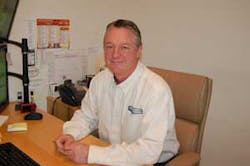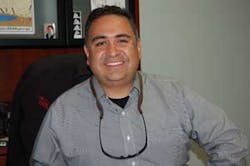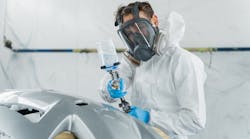Parts can account for the single largest portion of a shop’s sales and not an insignificant portion of a shop’s gross profit. Parts play a key role in cycle time and even customer satisfaction. That’s why it makes good sense to keep striving to improve all the processes related to parts: from choosing vendors and ordering, to how parts are received and handled and entered into the shop’s management and accounting systems.
We asked collision repairers, parts suppliers and other industry experts about the “hidden” costs they see related to the parts procurement portion of the collision repair process, and for the best practices they’ve found to improve shop performance related to parts.
Many electronic options – and mandates
Although much has been written about the battle over various insurers requiring their direct repair shops to use a particular electronic parts ordering system, many shops using such systems say that at a minimum, it has the potential to streamline a lot of the parts-related processes. Yet parts vendors say they are often surprised by the industry’s slow adoption of electronic parts ordering.
“I want to assure you that while some of us may consider faxing 20th century, the fax is still very much alive,” said John Bosin, a Collision Industry Conference (CIC) committee chairman, when moderating a panel discussion on the topic. “When you talk to parts suppliers, ask them how many faxes they get a day with orders. Not only is the fax machine still being used, but the phone is being used and a lot of parts salespeople and delivery people are carrying orders back into the office.”
| Electronic parts procurement options |
|
· uParts (www.uparts.com) · OPSTRAX (www.opstrax.com) · Car-Part.com (www.car-part.com) · PartsTrader (www.partstrader.us.com) · NuGen IT (www.nugenit.com) · APU Solutions (www.apusolutions.com) · CCC TRUE Parts Network (www.cccis.com/parts-suppliers) · OEConnection (www.oeconnection.com) |
Part of the problem is that there are about a dozen different electronic systems working to automate some aspects of parts procurement, and each of them has both strengths and weaknesses. They vary in how well they integrate with shop estimating and management systems, for example, and some focus more on alternative parts while others are more OEM-focused.
“The reason you might use OPSTRAX or PartsTrader or OEConnection is because each one of them solves a different piece of the problem,” said Jeff Schroeder of yet another system — Car-Part.com — during a CIC panel discussion earlier this year. “If you integrate together, you get more and more pieces solved. But no one has really solved all pieces of the problem yet. We’re all still working on it.”
The panelists say its probably unlikely that shops will ever be able to use a single electronic parts system that meets their needs and those of all their potential trading partners (just as many shops continue to have multiple estimating systems). But continued integration of the systems should make the process less burdensome to shops.
In the meantime, the vendors say, shops should consider which one or combination of the systems best meets their needs.
Working with vendors
John Kallen of Champion Collision in Sandy, Ore., keeps 14 employees
busy in his 15,000-square-foot shop, despite not having a single insurance direct repair program agreement. That means he was free to select the electronic parts ordering system of his choice, a choice that he says was influenced by those on the other end of the parts transaction — the OEM parts departments from which the shop buys parts.
That includes nearby dealerships that refer work to Champion.
“Their philosophy mirrors ours very similarly, and they’ve been very supportive of us,” Kallen said. “The parts departments at both those dealerships knock it out of the park for us as well.”
Kallen said the shop uses OEConnection’s CollisionLink program to order many of the shop’s parts, in part because it enables ordering even when the vendors are closed.
“It’s a great tool for scrubbing the VIN, and it has a lot of note features that help streamline the process,” Kallen said. “But one of the biggest factors for me was asking the vendors what they like, what do they embrace, what works on their end as far as a program and a process. The one that kept popping to the surface was CollisionLink. So we put the time and effort in on our end, because if it’s easier for them, it makes things more fluid.”
Parts choice and handling processes
Ask Lorenzo Avila and Norberto Salas about parts practices within their business, and they first want to explain that they see themselves as in the safety business as much as the collision repair business.
“You have to do a repair thinking about the safety of the passengers,” said Avila, who along with Salas, operates two Luxe Collision locations in the San Francisco Bay area. “I don’t make the cars. The insurers don’t make the cars, either. There is someone in the middle that I call the referee — the ones who build the cars. They’re the ones who are going to tell us how to do a proper repair.”
He said that’s why, for example, their company is very selective when it comes to the use of non-OEM parts.
“I know on the OEM side we’re safe,” Avila said. “How am I guaranteeing that the passenger is going
to be safe after I’ve replaced with non-OEM parts? So we do test-fits. If it doesn’t fit, we document it, and put new [OEM] parts on. The insurance companies pretty much respect that as long as you document it.”
“It’s all about the client and their safety,” Salas agreed. “It’s a battle we fight every day.”
Avila and Salas are brothers-in-law who worked together at another collision repair business before opening the first of their two shops. It’s easy to see evidence of the parts-related organizational and process improvements the two have brought to the business. In the shop’s parts department, for example, all damaged parts are “mirror-matched” against their replacements when they are delivered to ensure they are correct. Every job is assigned a parts cart for both the removed and replacement parts, with the cart number included with other information written on the vehicle’s windshield.
“I don’t ever like to see parts on the floor,” Avila said. “We have racks and stands for all parts.”
Don’t leave parts money on the table
Industry trainer Mike Anderson of Collision Advice said any discussion of parts management and profitability shouldn’t exclude “stock parts” – such as clips and fasteners. More than a half-dozen companies offer easy-to-use systems that allow shops to quickly track the number and types of these parts in order to produce an invoice that can be added to the final bill, much like any other part for the car.
“Your paint jobber can help you get set up with one of these systems,” Anderson said. “I was surprised when one of our quarterly ‘Who Pays for What?’ surveys found that fewer than 60 percent of shops reported using a system to track and bill for stock parts. Those are legitimate and sometimes significant expenses you have into repairing that car.”
Shop owners using the systems often agree it’s something they should have started using earlier than they did.
“That’s $500 a month at least that we had never charged,” Roger Fowler of J&W CARSTAR in McMinnville, Ore., said of his shop’s addition of one of the invoicing systems.
Look for waste in the process
A CIC committee last year worked to quantify some of the costs – for shops, insurers and parts vendors – associated with various inefficiencies related to the parts procurement process. Committee member Amjad Farah of AkzoNobel Coatings acknowledged that the entire parts ordering process is non-value-added.
“No one is paying us to order parts,” Farah said. “We get paid to paint them or put them on, but we’re not getting paid to order the parts. So the process in and of itself is non-value-added. But we still have to do it. So the objective is to look at the entire process [to figure out how to] make it as efficient as possible given that it has to be done.”
Farah suggested that a process map showing all the steps in traditional parts ordering can pinpoint wasted steps and the costs these steps add to the process. Shops, for example, sometimes order both OEM and non-OEM versions of the same parts at the same time in order to save time if the non-OEM version proves unusable. But receiving multiple parts and returning one adds costs for both the shop and parts vendors, Farah pointed out.
Choosing only parts offered by the “best vendor” identified by the shop can offer some efficiencies, he noted, but can raise the total costs of the parts used, or – if the shop can’t pass those costs along – reduce the shop’s profits.
Similarly, if a shop’s parts ordering decision is based on price alone, one risk could be poor service from the vendor, resulting in delays.
Ordering parts from multiple vendors for the same job results in multiple invoices to be paid. If it costs you $25 to receive a part and process that invoice, Farah said, and that happens on 75 percent of your repair orders, that can quickly add up to thousands of dollars in costs.
| Four more best practices |
|
Industry consultant and trainer Mike Anderson of Collision Advice suggests shops implement these four parts-related best practices as well: · Use the OEM parts diagrams. Anderson said the estimating databases are not always as current and complete as the OEM information. He recommends that estimators have dual monitors so they can view the OEM parts graphics while they are preparing estimates or repair plans. · Mirror-match every part, every time. Although Anderson has for years recommended that shops check new parts as they are received against the damaged parts they will be replacing, he said this step has become even more critical. He cites an example of a shop that ordered a grille and emblem based on an insurance estimate. The insurer had chosen the least expensive emblem option, but the vehicle was equipped with accident-avoidance systems that required a significantly more expensive clear grille emblem in order for sensors to work properly. Anderson said the shop would have caught the mistake had the parts been mirror-matched once received. · Be pro-active. Shop management systems can produce a report showing what parts have been ordered but not received. Anderson recommends checking this three days in advance, to see on Monday, for example, what parts will be needed on Thursday but have not yet arrived. “That way you can be much more proactive than reactive,” Anderson said. · Code parts properly. Anderson said he finds a lot of accounting problems within shops based on how parts are coded within management and accounting systems. If a shop gets an OEM price match for a non-OEM part, for example, that change should be made within the management system when the invoice is entered. Otherwise, the sale may be registered in the accounting system as non-OEM, but the cost (generally driven by the vendor name) is attributed to OEM. Even just a few of these errors can throw off a shop’s accounting numbers significantly, Anderson said. |
When you look at the process as a whole, Farah said, you quickly “come to the realization that as an industry we really need to find a way to make the whole process more efficient for all parties involved.”
That’s why CIC Chairman Randy Stabler has said he’d like to see more research into parts best practices and how the electronic parts procurement systems measure and track inefficiencies so they can be reduced.
“We may have electronic parts procurement models that do a good job sourcing by price, but do they look at all those other factors that can reduce the overall internal cost of operation?” Stabler asked. “Suppliers, repairers, consumers and insurers all pay for these inefficiencies.”





